From Customer Lifetime Value as a North Star to Cultural Shifts and the rise of “custobots,” Author Ilenia Vidili shares how organisations can move from lip service to lasting customer trust.
Customer centricity has become one of the most overused promises in business.
Mission statements shout “customers at the heart,” yet behind the slogans, many organisations still optimise for quarterly revenue, stock price, or market share. The disconnect is glaring: executives say they’re customer-obsessed, but few have ever spoken directly with a customer.

Author Ilenia Vidili challenges companies to move beyond lip service. She argues that genuine customer centricity requires a fundamental rewiring of culture, metrics, and leadership behaviour.
It’s not about being “easy” or “simple”—it’s about making hard trade-offs, embedding long-term trust, and preparing for a future where brands must serve not just human customers, but also machine ones.
Ilenia is a sought-after customer-centricity advisor, international keynote speaker, and author of Journey to Centricity. She helps companies worldwide shift from product mentalities to people mentalities, streamline processes, and find practical ways to create more value for their customers – resulting in stronger loyalty and sustainable growth.
In this interview, she also stresses that true customer centricity is proven in the trade-offs companies make, not in mission statements. Vidili highlights cultural shifts such as purpose over profit, breaking down silos, empowering employees, and empathetic leadership as essential to embedding customer focus.
Full interview:
In your view, what separates genuine customer centricity from lip service?
Genuine customer centricity is about fundamentally changing how a business behaves. Any company can claim to put customers first – you see the press releases and mission statements about “customers at the heart” – but the real proof is in trade-offs and actions.
I’m often asked, “How do you know if a company is customer-centric?” and my answer is: I look at the trade-offs they are willing to make. This could mean delaying short-term profit to invest in long-term relationships, choosing to fix systemic issues rather than papering over them with discounts, or prioritising trust and transparency even if it slows growth.
A genuinely customer-centric company will make decisions with a long-term view of customer relationships, even when it’s hard. In contrast, lip service happens when companies talk about customers, but internally, incentives and metrics are still all about short-term revenue and stock price.
You can often tell the difference by whether the company’s behaviour aligns with its words. Are they investing in customer experience even if it doesn’t pay off immediately? Do leaders regularly spend time listening to customers on the front lines, or do they just review spreadsheets?
It always astonishes me how many executives say they’re customer-centric yet have never actually met a customer in person. True customer-centricity means you’ve embedded the customer’s perspective into your culture and strategy – it’s sustained and consistent, not an occasional marketing campaign.
In short, genuine customer-centric firms focus on the quality and depth of customer relationships, not just the number of customers or quick sales. As I write in my book, Journey to Centricity, “the number of customers means nothing if the relationship with them is flat.”
If you had to define a “north star metric” for true customer centricity, what would it be?
I would choose Customer Lifetime Value (CLV) as the “north star” metric for customer centricity. CLV represents the total value a customer brings over the entire relationship, not just a single transaction. Focusing on CLV forces you to think beyond short-term sales and ask, “How do we keep this customer happy and engaged for years, so they continue to choose us?”
If CLV is rising, it means you’re doing something right, you’re earning repeat business, loyalty, and maybe referrals. It encapsulates many aspects of customer-centric success: retention, share of wallet, and loyalty all rolled into one indicator.
Importantly, CLV shifts the mindset to long-term relationship-building. Instead of just looking at quarterly revenue, teams start to consider how their actions impact the customer’s lifetime with the company.
For instance, investing in better support or product quality might not pay off this quarter, but it will increase retention and spending over time – thus boosting CLV. CLV is superb as a North Star metric, but only if you have reliable data and if your business model supports long-term relationships.
In cases where transactions are rare or behaviour is hard to measure, you might need to supplement it with engagement or retention metrics.
What are the most powerful cultural shifts an organisation must undergo to truly put the customer at the centre?
Great question. It would take me a few days just to answer this one. To become truly customer-centric, an organisation often needs to undergo several deep cultural transformations. Some of the most powerful shifts include:
- From profit-first to purpose-first:
There needs to be a mindset shift where profit becomes the outcome of doing the right thing for customers, not the sole objective. This means embracing a higher purpose or mission that guides the company – a North Star beyond just making money. For example, when Hubert Joly turned around Best Buy, he shifted the culture from “let’s maximise profit” to “let’s fulfil a noble purpose for customers and employees.” Profit was treated as a result, not the goal. When a company rallies around a purpose like improving customers’ lives, it naturally starts making decisions in the customers’ interest.
- Easing silos and aligning around the customer:
Traditionally, companies organise around products and functions, which can create tunnel vision. A customer-centric culture eases internal silos and encourages collaboration across departments to serve customer needs holistically. Instead of each team worrying only about its own KPIs, everyone rallies around a common shared understanding of customer needs. This might involve new cross-functional teams focused on customer segments or experiences, and a free flow of customer insights across the organisation. The old mindset of “that’s not my department” goes away as everyone owns the customer experience in their own role.
- Empowering and caring for employees:
There’s a saying we often hear: happy employees = happy customers. To put customers truly at the centre, you must create a culture where employees feel valued, heard, and empowered to do what’s right for the customer. That means investing in employee training, wellbeing, and giving teams the autonomy to solve customer problems without bureaucratic hurdles. When employees are motivated and have a clear customer-focused mission, they will go the extra mile to delight customers. A customer-centric culture treats employees as internal customers – with respect, communication, and trust – so they can project the same to customers.
- Leadership leading by example with empathy:
Culture flows from the top. Leaders in a truly customer-centric company must model customer-focused behaviours. That includes regularly interacting with customers, listening to their feedback, and demonstrating empathy.
Pizza Hut UK CEO, who literally spent a few hours waiting tables every month to stay connected with customers and frontline staff. When the C-suite shows that no one is too important to talk to customers or too proud to take criticism, it sends a powerful message.
Leaders should also encourage a “fail fast, learn fast” mentality around customer innovation, rather than punishing any misstep. In short, the shift is to a humble, learning-oriented leadership style that prioritises customers over egos.
Each of these cultural shifts helps ensure that putting the customer first is a daily practice. It’s about changing mindsets, structures, and habits – from the boardroom to the frontline – so that doing right by the customer becomes the path to success.
How do you ensure that customer centricity is consistent globally when customer expectations can be highly local?
Ensuring a consistent level of customer centricity globally, while honouring local expectations, is a balancing act of common principles and localised execution. First, a company needs a strong central culture and vision for customer centricity that is non-negotiable everywhere.
Think of this as the global “DNA” of how you treat customers.
For example, a core principle might be empathy and respect towards customers, no matter the country. Howard Schultz of Starbucks famously kept two empty chairs in every board meeting – one representing the customer and one the employee – to remind everyone of those voices in every decision.
That kind of symbolic but powerful commitment sets a consistent tone from the top. Every employee worldwide knows that “we consider the customer in everything we do.”
Around those shared values and standards, you then empower local teams to adapt and deliver in ways that make sense for their market. Customer expectations do vary – what delights a customer in Tokyo might differ from what a customer in rural Italy needs.
A globally consistent approach doesn’t mean a one-size-fits-all product or script. It means the level of care, listening, and responsiveness should be equally high everywhere, but the solutions can be local.
For instance, your support hours, product flavours, or user interface might be localised, but the commitment to solve the customer’s problem and make them feel valued stays constant. Communication and knowledge sharing are key here. The organisation should actively share customer insights across regions.
If your Brazilian team discovers a new way to wow customers, that lesson can be rolled out globally if applicable. Likewise, a strong global customer-centric company learns from its local failures quickly and doesn’t repeat them elsewhere.
Finally, consistency comes from having a clear decision-making framework that everyone uses, from HQ to local branches. At Best Buy, as part of their culture transformation, leadership introduced four simple questions to vet any initiative:
Does it align with our purpose? Is it good for the customer? Can we deliver it well? And only then, can we make money from it?. Notice that “is it good for the customer?” came before “can we make money?”.
A framework like that ensures that whether you’re a manager in New York or New Delhi, you’re making choices with the same priorities in mind.
In summary, clarity of purpose and principles keeps you consistent globally, while local empowerment and insight keep you relevant locally. It’s about being “glocal” – globally unified, locally tuned.
If you imagine the “next frontier” of customer centricity, what does it look like beyond personalisation and loyalty?
The next frontier of customer centricity will be shaped by a paradox: the more technology rises, the more human connection will be in demand. Customers are craving for it. They want brands that remember they are human beings, not just data points. So the future isn’t just about faster AI or hyper-personalisation, it’s about deeper human experiences that balance efficiency with empathy.
At the same time, we’ll see the rise of machine customers, or Custobots. In simple terms, these are digital entities – algorithms, bots, or connected devices – that buy and interact with brands on behalf of humans.
Imagine your fridge ordering milk before you run out, or a company’s AI system negotiating supplier contracts. It’s still customer behaviour, but the “customer” is now partly a machine acting in someone’s interest. This will change the game.
Companies will need to design for two kinds of customers: the emotional human, who wants connection and trust, and the custobot, who wants efficiency, accuracy, and instant fulfilment. Success will come from balancing both.
For humans, they should focus on trust, empathy, and emotional connection. That means meaningful conversations, transparent decisions, and experiences that make people feel valued. Humans will forgive a mistake if they feel companies care. For custobots, you build systems that are seamless, accurate, and fast. That means clean data, reliable APIs, and processes that machines can interact with directly. However, Custobots won’t forgive mistakes; they’ll just switch to a competitor’s system instantly.
If you had to delete all your customer surveys and could only observe one behaviour to understand loyalty, what would you choose?
If I had to delete all surveys and observe just one behaviour to understand loyalty, I’d watch the repeat purchase rate. Do customers come back and buy again without being pushed? That’s the clearest signal of trust and loyalty.
A high repeat rate shows that people don’t just try you once – they choose you again, even when alternatives exist. It also links directly to long-term value, because loyal customers usually spend more over time. In other words, action speaks louder than survey NPS score.
That said, it isn’t perfect in every industry. If you sell something people only buy once in a lifetime – like a car or a wedding ring – repeat purchase isn’t as telling. In those cases, you’d look at renewals, referrals, or continued engagement as equivalents. But in most sectors, whether customers return of their own accord is the most reliable window into real loyalty.
Tell us about your book and if you have any others in the pipeline.
My book is called Journey to Centricity: A Customer Centric Framework for the era of Stakeholder Capitalism. It’s a roadmap for companies that want to move from product obsession to customer obsession.
The core idea is that we’re now in the age of stakeholder capitalism, where companies have to create value not just for shareholders, but for customers, employees, and society at large. The book explains why this shift is happening and, more importantly, how to navigate it.
I provide a framework built on three main pillars: Humanity, Technology, and Culture.
- The Humanity pillar is about the “why” – infusing your business with purpose, empathy, and trust. It shows how brands can become more human by having an authentic mission, practising empathy with customers, and building trust – the real currency of relationships. I’ve also created a LinkedIn Learning course on customer trust for those who want to explore this topic in a practical way.
- The Technology pillar addresses the “how” – using digital tools and innovation as enablers to deliver great customer experiences. This isn’t just about having the latest tech for its own sake, but using things like product innovation, ease of use, and even hyper-personalisation responsibly to make customers’ lives easier. I talk about balancing high-tech with human-touch, so that technology serves human needs.
- The Culture pillar is about the “who” – it dives into the people side of the business. I argue that you cannot become customer-centric without transforming your organisational culture. That means leadership mindset, easing silos and creating an environment where employees are motivated and empowered to put the customer first. I share a lot of real-world examples and even interviews I conducted with leaders and experts to illustrate how culture change can happen.
I’m now exploring the subject for my next book. I’m also working on something new, which will launch next year. It isn’t a book, a course, or a programme. It’s a hands-on tool that companies will be able to use to accelerate their customer-centric growth.
ALSO READ: When Shelves Go Digital: The Next Frontier of Retail Intelligence
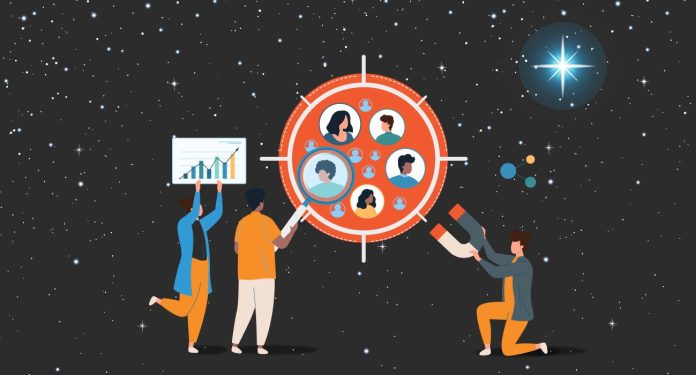








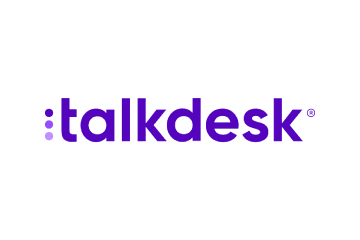

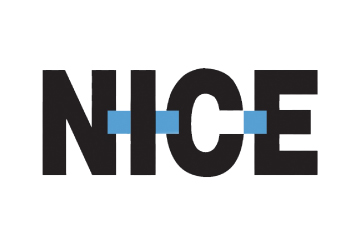







 Amplitude is a product analytics platform, enabling businesses to track visitors with the help of collaborative analytics. The platform leverages the capabilities of
Amplitude is a product analytics platform, enabling businesses to track visitors with the help of collaborative analytics. The platform leverages the capabilities of 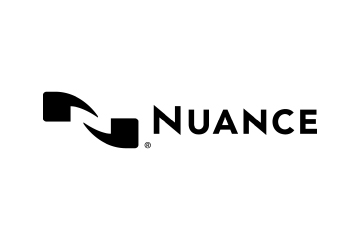

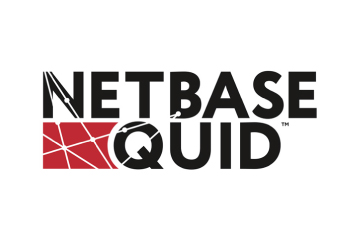
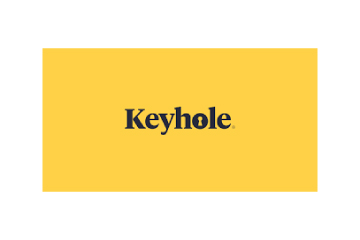

 Zoho Social, a part of Zoho’s suite of 50+ products, is a comprehensive social media management platform for businesses and agencies. The Zoho Social dashboard includes a robust set of features, such as Publishing Calendar, Bulk Scheduler, and Approval Management to offer businesses all the essential social media publishing tools. Its monitoring tools help enterprises track and respond to relevant social conversations.
Zoho Social, a part of Zoho’s suite of 50+ products, is a comprehensive social media management platform for businesses and agencies. The Zoho Social dashboard includes a robust set of features, such as Publishing Calendar, Bulk Scheduler, and Approval Management to offer businesses all the essential social media publishing tools. Its monitoring tools help enterprises track and respond to relevant social conversations.

 Microsoft Dynamics 365 represents a robust cloud-based CRM solution with features such as pipeline assessment, relationship analytics, and conversational intelligence. It utilises AI-powered insights to provide actionable intelligence via predictive analytics, lead scoring, sentiment analysis, etc. Currently, Microsoft operates in 190 countries and is made up of more than 220,000 employees worldwide.
Microsoft Dynamics 365 represents a robust cloud-based CRM solution with features such as pipeline assessment, relationship analytics, and conversational intelligence. It utilises AI-powered insights to provide actionable intelligence via predictive analytics, lead scoring, sentiment analysis, etc. Currently, Microsoft operates in 190 countries and is made up of more than 220,000 employees worldwide.
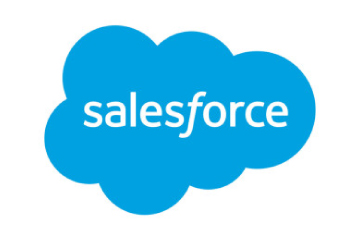
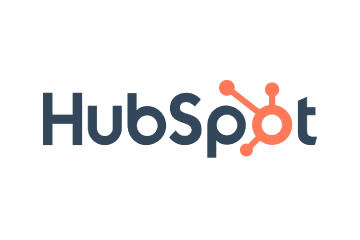 HubSpot is an inbound marketing, sales, and customer service software provider, offering robust CRM and automation solutions. Some of its products include Marketing Hub, Sales Hub, Operations Hub, Content Hub, Commerce Hub, Marketing Analytics and Dashboard Software. Guided by its inbound methodology, HubSpot enables companies to prioritise innovation and customer success.
HubSpot is an inbound marketing, sales, and customer service software provider, offering robust CRM and automation solutions. Some of its products include Marketing Hub, Sales Hub, Operations Hub, Content Hub, Commerce Hub, Marketing Analytics and Dashboard Software. Guided by its inbound methodology, HubSpot enables companies to prioritise innovation and customer success.
 Monday.com is a project management software company, offering a cloud-based platform that enables businesses
Monday.com is a project management software company, offering a cloud-based platform that enables businesses  Headquartered in San Mateo, California, Freshworks is a global AI-powered business software provider. Its tech stack includes a scalable and comprehensive suite for IT, customer support, sales, and marketing teams, ensuring value for immediate business impact. Its product portfolio includes Customer Service Suite, Freshdesk, Freshchat, Freshcaller, Freshsuccess, and Freshservice. Freshservice for Business Teams has helped several global organisations to enhance their operational efficiency.
Headquartered in San Mateo, California, Freshworks is a global AI-powered business software provider. Its tech stack includes a scalable and comprehensive suite for IT, customer support, sales, and marketing teams, ensuring value for immediate business impact. Its product portfolio includes Customer Service Suite, Freshdesk, Freshchat, Freshcaller, Freshsuccess, and Freshservice. Freshservice for Business Teams has helped several global organisations to enhance their operational efficiency.
 Talkdesk offers an innovative AI-powered customer-centric tech stack to its global partners. The company provides generative AI integrations, delivering industry-specific solutions to its customers. Talkdesk CX Cloud and Industry Experience Clouds utilise modern machine learning and language models to enhance contact centre efficiency and client satisfaction.
Talkdesk offers an innovative AI-powered customer-centric tech stack to its global partners. The company provides generative AI integrations, delivering industry-specific solutions to its customers. Talkdesk CX Cloud and Industry Experience Clouds utilise modern machine learning and language models to enhance contact centre efficiency and client satisfaction.




 The company offers comprehensive cloud-based solutions, such as Microsoft Dynamics 365, Gaming Consoles, Microsoft Advertising, Copilot, among other things, to help organisations offer enhanced CX and ROI. Its generative-AI-powered speech and voice recognition solutions,such as Cortana and Azure Speech Services empowers developers to build intelligent applications.
The company offers comprehensive cloud-based solutions, such as Microsoft Dynamics 365, Gaming Consoles, Microsoft Advertising, Copilot, among other things, to help organisations offer enhanced CX and ROI. Its generative-AI-powered speech and voice recognition solutions,such as Cortana and Azure Speech Services empowers developers to build intelligent applications.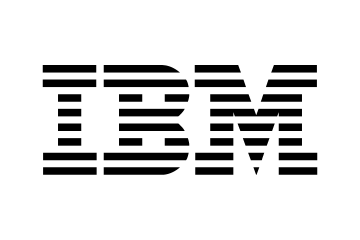 IBM is a global hybrid cloud and AI-powered
IBM is a global hybrid cloud and AI-powered  Uniphore is an enterprise-class, AI-native company that was incubated in 2008. Its enterprise-class multimodal AI and data platform unifies all elements of voice, video, text and data by leveraging Generative AI, Knowledge AI, Emotion AI and workflow automation. Some of its products include U-Self Serve, U-Assist, U-Capture, and U-Analyze. Its Q for Sale is a conversational intelligence software that guides revenue teams with AI-powered insights, offering clarity on how to effectively keep prospects engaged.
Uniphore is an enterprise-class, AI-native company that was incubated in 2008. Its enterprise-class multimodal AI and data platform unifies all elements of voice, video, text and data by leveraging Generative AI, Knowledge AI, Emotion AI and workflow automation. Some of its products include U-Self Serve, U-Assist, U-Capture, and U-Analyze. Its Q for Sale is a conversational intelligence software that guides revenue teams with AI-powered insights, offering clarity on how to effectively keep prospects engaged. Google Cloud accelerates every organisation’s ability to digitally transform its business. Its enterprise-grade solutions leverage modern technology to solve the most criticial business problems
Google Cloud accelerates every organisation’s ability to digitally transform its business. Its enterprise-grade solutions leverage modern technology to solve the most criticial business problems  8×8 offers out-of-the-box contact centre solutions, assisting all-size businesses to efficiently meet customer needs and preferences. It offers custom CRM integrations support and integrates effortlessly with third-party CRMs like Salesforce, Microsoft Dynamics, Zendesk, and more. Offering global support in all time zones & development teams in 5 continents, its patented geo-routing solution ensures consistent voice quality.
8×8 offers out-of-the-box contact centre solutions, assisting all-size businesses to efficiently meet customer needs and preferences. It offers custom CRM integrations support and integrates effortlessly with third-party CRMs like Salesforce, Microsoft Dynamics, Zendesk, and more. Offering global support in all time zones & development teams in 5 continents, its patented geo-routing solution ensures consistent voice quality. Sprinklr is a comprehensive enterprise software company for all customer-focused functions. With advanced AI, Sprinklr’s unified customer experience management (Unified-CXM) platform lets organisations offer human experiences to every customer, every time, across any modern channel.
Sprinklr is a comprehensive enterprise software company for all customer-focused functions. With advanced AI, Sprinklr’s unified customer experience management (Unified-CXM) platform lets organisations offer human experiences to every customer, every time, across any modern channel.


 Upland offers a comprehensive suite of contact centre and customer service solutions with products including InGenius, Panviva, Rant & Rave, and RightAnswers. InGenius enables organisations to connect their existing phone system with CRM, further enhancing agent productivity. Panviva provides compliant and omnichannel capabilities for highly regulated industries. Whereas, Rant & Rave, and RightAnswers are its AI-powered solutions,
Upland offers a comprehensive suite of contact centre and customer service solutions with products including InGenius, Panviva, Rant & Rave, and RightAnswers. InGenius enables organisations to connect their existing phone system with CRM, further enhancing agent productivity. Panviva provides compliant and omnichannel capabilities for highly regulated industries. Whereas, Rant & Rave, and RightAnswers are its AI-powered solutions, 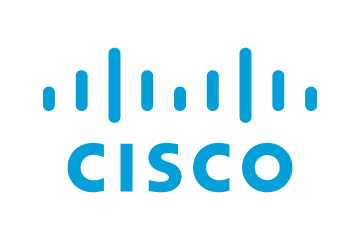


 Hootsuite, headquartered in Vancouver, is a social media management platform that streamlines the process of managing multiple social media accounts. Some of its core offerings include social media content planning and publishing, audience engagement tools, analytics and social advertising. Its easy-to-integrate capabilities help marketing teams to schedule and publish social media posts efficiently.
Hootsuite, headquartered in Vancouver, is a social media management platform that streamlines the process of managing multiple social media accounts. Some of its core offerings include social media content planning and publishing, audience engagement tools, analytics and social advertising. Its easy-to-integrate capabilities help marketing teams to schedule and publish social media posts efficiently.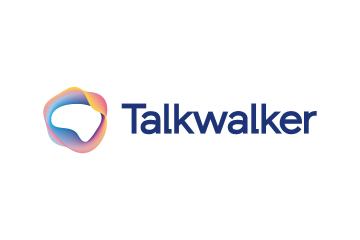

 Brandwatch enables businesses to build and scale the optimal strategy for their clients with intuitive, use-case-focused tools that are easy and quick to master. Bringing together consumer intelligence and social media management, the company helps its users react to the trends that matter, collaborate on data-driven content, shield the brand from threats and manage all the social media channels at scale.
Brandwatch enables businesses to build and scale the optimal strategy for their clients with intuitive, use-case-focused tools that are easy and quick to master. Bringing together consumer intelligence and social media management, the company helps its users react to the trends that matter, collaborate on data-driven content, shield the brand from threats and manage all the social media channels at scale.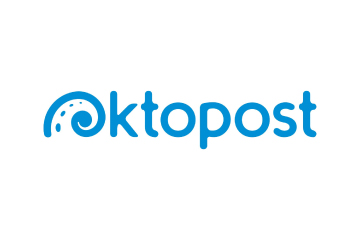


 Adobe Experience Cloud offers a comprehensive set of applications, capabilities, and services specifically designed to address day-to-day requirement for personalised customer experiences at scale. Its platform helps play an essential role in managing different digital content or assets to improve customer happiness. Its easy-to-optimise content gives users appropriate marketing streams, ensuring product awareness.
Adobe Experience Cloud offers a comprehensive set of applications, capabilities, and services specifically designed to address day-to-day requirement for personalised customer experiences at scale. Its platform helps play an essential role in managing different digital content or assets to improve customer happiness. Its easy-to-optimise content gives users appropriate marketing streams, ensuring product awareness. Salesforce-owned Tableau is an AI-powered analytics and business intelligence platform, offering the breadth and depth of capabilities that serve the requirements of global enterprises in a seamless, integrated experience. Marketers can utilise generative AI models, AI-powered predictions, natural language querying, and recommendationsons.
Salesforce-owned Tableau is an AI-powered analytics and business intelligence platform, offering the breadth and depth of capabilities that serve the requirements of global enterprises in a seamless, integrated experience. Marketers can utilise generative AI models, AI-powered predictions, natural language querying, and recommendationsons. Contentsquare is a cloud-based digital experience analytics platform, helping brands track billions of digital interactions, and turn those digital
Contentsquare is a cloud-based digital experience analytics platform, helping brands track billions of digital interactions, and turn those digital 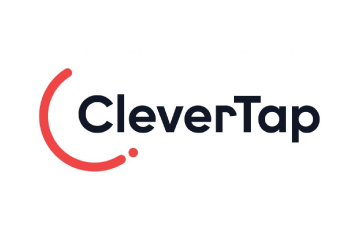
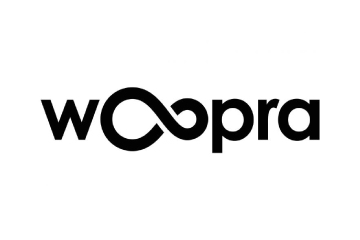

 Zoho Corporation offers innovative and tailored software to help leaders grow their business. Zoho’s 55+ products aid sales and marketing, support and collaboration, finance, and recruitment requirements. Its customer analytics capabilities come with a conversational feature, Ask Zia. It enables users to ask questions and get insights in the form of reports and widgets in real-time.
Zoho Corporation offers innovative and tailored software to help leaders grow their business. Zoho’s 55+ products aid sales and marketing, support and collaboration, finance, and recruitment requirements. Its customer analytics capabilities come with a conversational feature, Ask Zia. It enables users to ask questions and get insights in the form of reports and widgets in real-time. Fullstory is a behavioural data platform, helping C-suite leaders make informed decisions by injecting digital behavioural data into its analytics stack. Its patented technology uncovers the power of quality behavioural data at scale, transforming every digital visit into actionable insights. Enterprises can increase funnel conversion and identify their highest-value customers effortlessly.
Fullstory is a behavioural data platform, helping C-suite leaders make informed decisions by injecting digital behavioural data into its analytics stack. Its patented technology uncovers the power of quality behavioural data at scale, transforming every digital visit into actionable insights. Enterprises can increase funnel conversion and identify their highest-value customers effortlessly.

 Started in 2005 in a Sweden-based small town, Norrköping, Voyado offers a customer experience cloud platform that includes a customer loyalty management system. This platform helps businesses design and implement customer loyalty programs, track customer
Started in 2005 in a Sweden-based small town, Norrköping, Voyado offers a customer experience cloud platform that includes a customer loyalty management system. This platform helps businesses design and implement customer loyalty programs, track customer 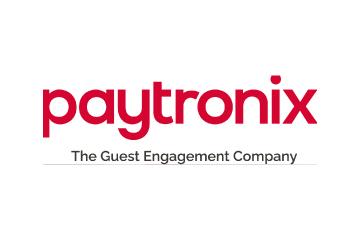


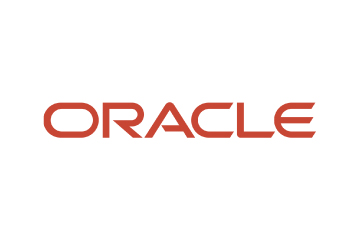
 TapMango provides a comprehensive, customisable, flexible and feature-rich customer loyalty program. The loyalty tools include an integrated suite of customised consumer-facing technology, easy-to-use merchant tools, and automation algorithms, all aimed at enhancing customer experience. Adaptable to any industry, TapMango’s platform helps merchants compete with larger chains, converting customer one-time purchases into profitable spending habits.
TapMango provides a comprehensive, customisable, flexible and feature-rich customer loyalty program. The loyalty tools include an integrated suite of customised consumer-facing technology, easy-to-use merchant tools, and automation algorithms, all aimed at enhancing customer experience. Adaptable to any industry, TapMango’s platform helps merchants compete with larger chains, converting customer one-time purchases into profitable spending habits.

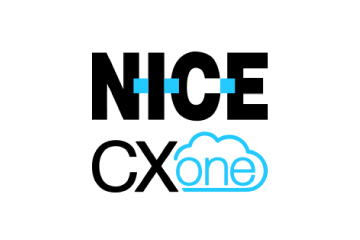
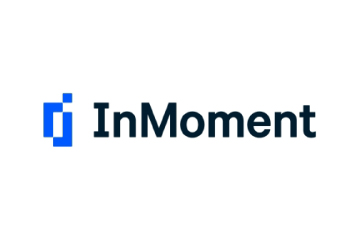

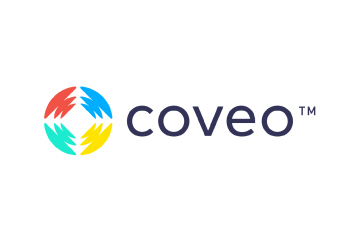

 Adobe Experience Cloud offers a comprehensive set of applications, capabilities, and services specifically designed to address day-to-day requirements for personalised customer experiences at scale. Its innovative platform has played an essential role in managing different digital content or assets, to improve customer happiness or satisfaction. Some of its products include Adobe Gen Studio, Experience Manager Sites, Real-time CDP, and Marketo Engage.
Adobe Experience Cloud offers a comprehensive set of applications, capabilities, and services specifically designed to address day-to-day requirements for personalised customer experiences at scale. Its innovative platform has played an essential role in managing different digital content or assets, to improve customer happiness or satisfaction. Some of its products include Adobe Gen Studio, Experience Manager Sites, Real-time CDP, and Marketo Engage.

